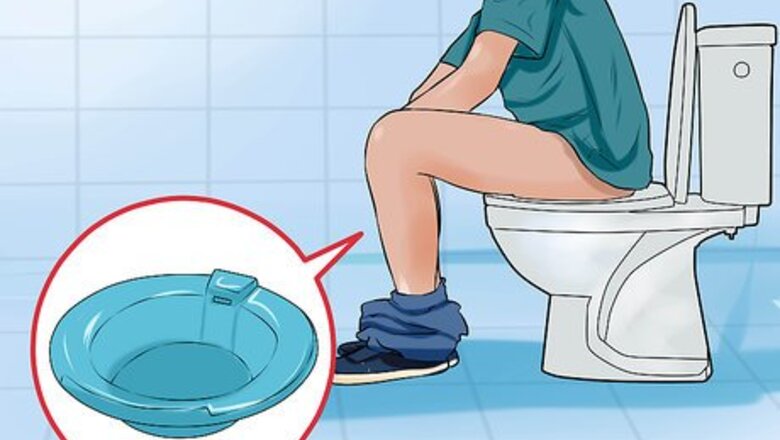
views
X
Research source
[2]
X
Trustworthy Source
Harvard Medical School
Harvard Medical School's Educational Site for the Public
Go to source
If you are experiencing hemorrhoids, there are ways you can relieve itching.
Relieving Itching
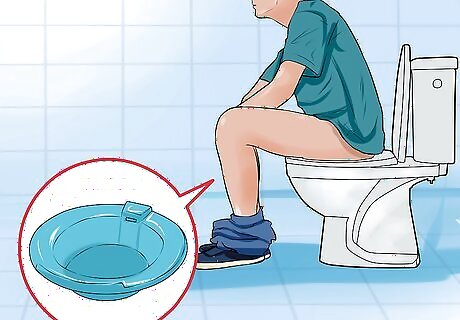
Take a warm sitz bath. A sitz bath has become a general phrase for a shallow bath of only a few inches of water. You get in it to soak your anus; however, if you prefer, a full bath can accomplish the same thing. These baths allow for better circulation in the anal area, mostly due to the warmth, and adds extra relaxation and healing of the tissues around your anus. Repeat it two times a day. You can also buy a sitz bath that fits over your toilet at any pharmacy or medical supply store. Add about one cup of epsom salts to a full bathtub or two to three tablespoons of epsom salts into a few inches of water in the tub or toilet sitz bath. You can also add a tablespoon of witch hazel or baking soda as well.This will help decrease the swelling and inflammation, which will relieve the itching. Keep the water warm, but not too hot.
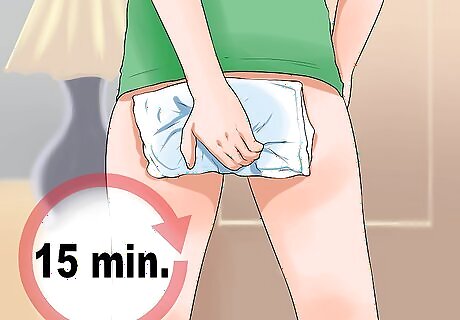
Use a warm compress. To help relieve any itching experienced from hemorrhoids, make a towel compress for the area. Soak a clean, soft towel in warm (not hot) water. Apply the compress to your anus for about 10 to 15 minutes. Make sure it is directly on the hemorrhoid. Repeat four to five times a day. After you finish, use a clean cotton towel to dry yourself thoroughly. Make sure you pat the area. Do not rub your anal region because it will irritate it even more.
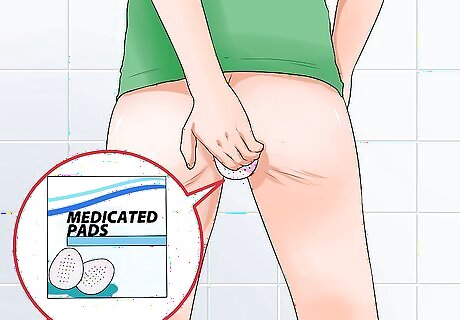
Use a medicated pad. To relieve itching, you can use a medicated pad. These are available commercially at most drug stores. If you are itching, gently cleanse the area. Next, use one of the wipes to gently wipe the anal area. Do not rub the area. Repeat six times a day. Make sure you use one of these whenever you have a bowel movement. Always cleanse the area first, then use the pad. Also make sure you throw the pad away after use.
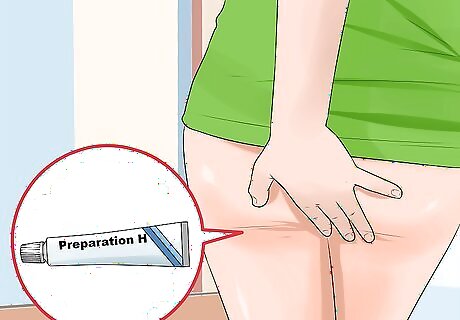
Try pain- and itch-relieving gels or lotions. Medicated gels and lotions can help reduce itching. Use a small amount of aloe vera gel or Preparation H to help with hemorrhoidal pain and discomfort. Apply it as often as needed. Avoid any cream that has steroids in it for a long period of time or more than an occasional basis. With repeated use, these can damage the delicate tissue around a hemorrhoid. If you don't have these, try a tiny bit of baby teething gel on the area. These teething gels contain a local anesthetic that can decrease the itching.
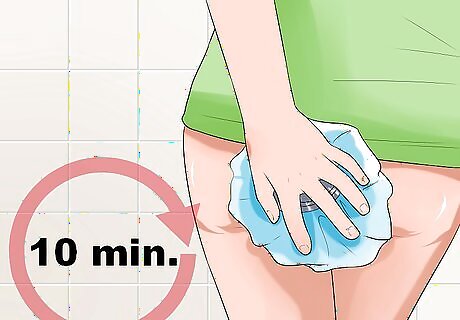
Use cold compresses. Ice packs can help reduce swelling. Apply one to the area once it is clean for not more than 10 minutes. Make sure to wrap the cold compress with a towel so the cold doesn't harm your skin. Repeat several times a day. You can follow it with a warm compress for 10 to 20 minutes to help ease the discomfort even more.
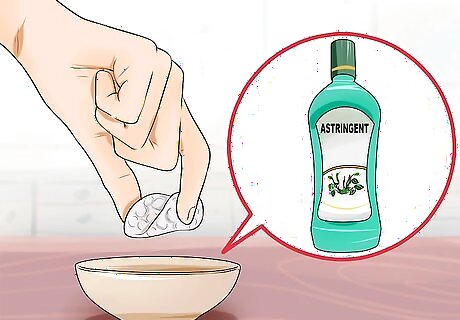
Use an herbal astringent. Herbal astringents, like witch hazel, help with itching skin. Witch hazel acts as an astringent and can help reduce any swelling and itching you experience. Soak a cotton pad with the astringent and apply it after you have cleansed yourself following a bowel movement. Repeat as often as needed, but aim for at least four or five times a day. Never use any herbal astringent on your anus before first cleansing yourself.
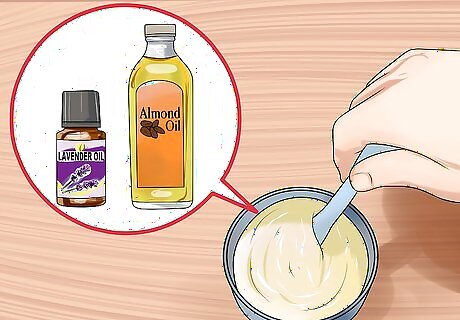
Use essential oils. Essential oils may help treat hemorrhoids and reduce itching. To make a treatment, add two to four drops of an essential oil to two fluid ounces of a base oil, such as castor or almond oil. Mix well and apply directly on your external hemorrhoid. You can use one to three oils in your mixture. Lavender oil can help relieve pain and itching. Cypress oil is used to sooth and help heal the tissues. Tea tree oil is used as an antiseptic and anti-inflammatory oil. Avocado oil can be used as a base or added to other oils. It moisturizes, soothes, and accelerates healing. These can also be applied to internal hemorrhoids, but in general, that would require a partner to apply. If you have a partner willing to help, make sure your partner washes his or her hands before and after application and wear non-latex gloves or a finger cot for the application.
Understanding Hemorrhoids
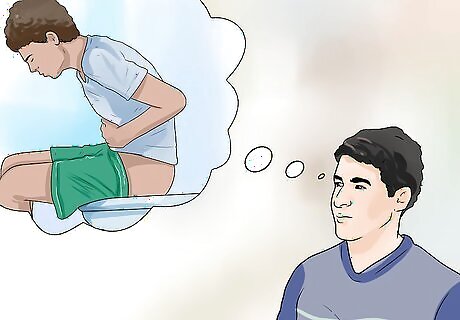
Learn the causes. Hemorrhoids are enlarged veins that are found either externally or internally around the anus, the opening of the rectum. Hemorrhoids are most commonly caused by straining or pushing too hard during a bowel movement. They can also be caused by obesity, lifting heavy objects, sitting too long, and pregnancy. Hemorrhoids are also associated with age and a history of constipation. In pregnancy, hemorrhoids occur commonly and are due to the increased pressure caused by the growing fetus, which causes pressure on the veins of the lower abdomen.
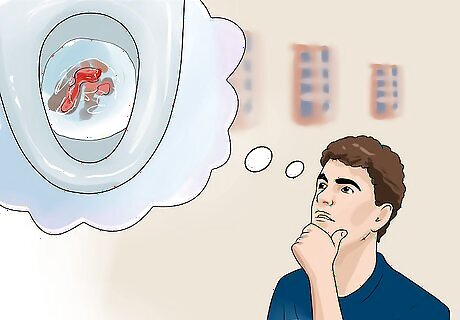
Recognize the symptoms. The most common symptom of hemorrhoids is bleeding during a bowel movement. You may notice blood on the toilet paper or drops of blood in the toilet bowl. Other symptoms of hemorrhoids, especially external ones, are itchiness and pain or tenderness. You may actually feel an external hemorrhoid when cleaning yourself. It will be a tender, puffy swelling around the anal opening. You won’t usually feel internal hemorrhoids, but they can bulge through the anal opening. As long as it is only a spot of blood or a few drops of blood in the toilet, there is no need to panic.
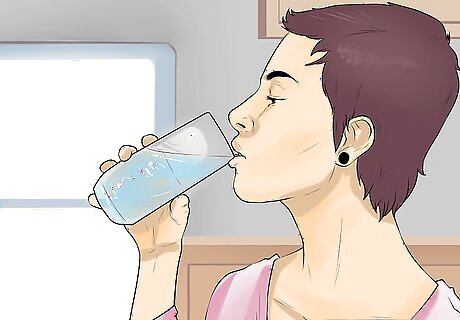
Prevent hemorrhoids. Preventing hemorrhoids can be achieved through diet. There are many different techniques you can try, which you can play with until you find what works best for you. Some of the techniques include: Trying to soften and hydrate the stool by drinking lots of water. Drink nine to twelve eight ounce glasses of water a day. This also helps get rid of hemorrhoids. They will often go away and the swelling will be reduced if the amount of irritation caused by passing stools is minimized. Stool contains significant amounts of water, so the more water a stool contains, the softer and easier to pass it will be. Increasing the fiber in your diet. Fiber helps keep water in the stool and bulks it up so that it passes more easily. It also helps lessen the pain of hemorrhoids. Eat whole grains, like brown rice, barley, corn, rye, and oatmeal. Fruits, such as cherries, plums, prunes, apricots, and berries, and vegetables, like leafy greens, are great sources of fiber. Also try beans and legumes. Avoiding laxatives. Laxatives can be habit forming and can also weaken the bowels, potentially leading to chronic constipation.
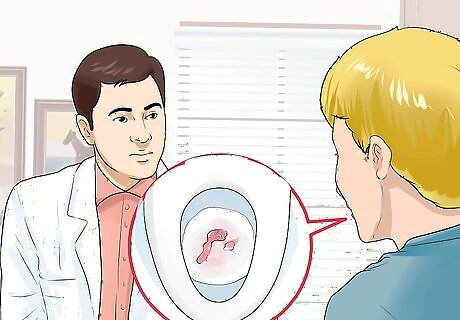
See your doctor. Most hemorrhoids resolve using home remedies and over the counter remedies within four to seven days. If you don’t see improvement (less pain, less itching, less tenderness, and less bleeding) within two to three days, call your doctor. There are medical treatments for more serious cases. Many, if not most, hemorrhoids can safely be treated at home. If the bleeding doesn’t stop or if there is a large amount of blood, you should call your doctor for an appointment right away. Also, if you are on blood thinning medication and experience rectal bleeding, call your physician right away. A doctor will generally diagnose internal or external hemorrhoids by visual inspection and performing a rectal exam. If you have internal hemorrhoids, your doctor may remove them using rubber band ligation, which uses a rubber band to cut off circulation to the hemorrhoid. After about a week the hemorrhoid will die and fall off, leaving scar tissue. Other treatments may include coagulation therapy or sclerotherapy.












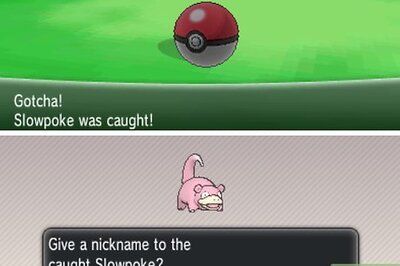
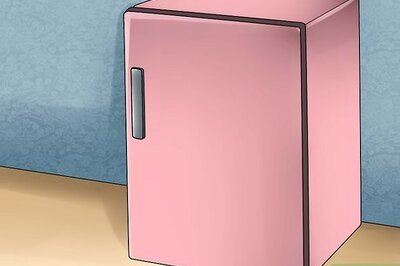






Comments
0 comment